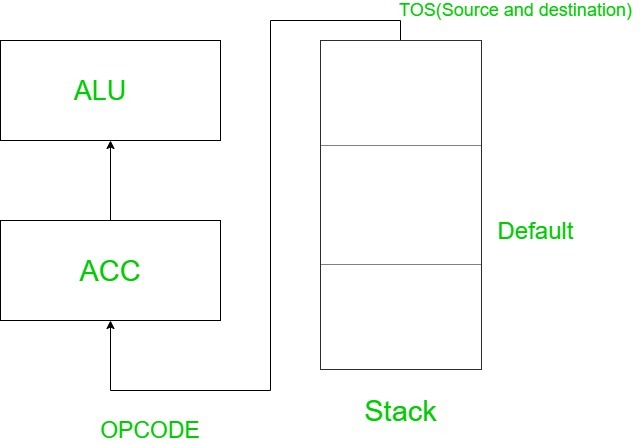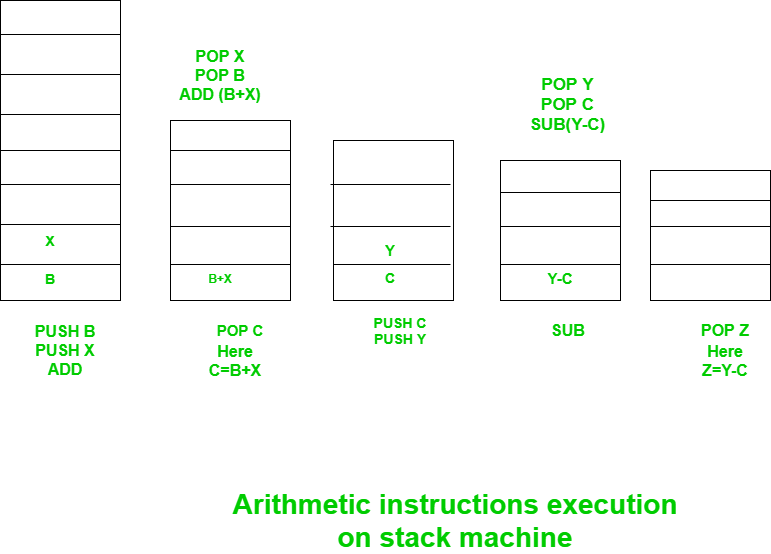Stack machine in Computer Organisation
Last Updated :
19 Feb, 2020
Instruction formats are classified into different types depending upon the CPU organization. CPU organization is again classified into three types based on internal storage: Stack machine, Accumulator machine, General purpose organization or General register. In this article, we will learn about the stack machine in computer organizations.
Stack Machine:
In the stack machine, data is available at the top of the stack by default. The stack acts as a source and destination, push and pop instructions are used to access instructions and data from the stack. There is no need to pass the source and destination address because the default address is top of the stack. In the stack machine, there is no need to pass explicit addresses in the instruction. Therefore the instruction format consists only of the OPCODE (Operation Code) field. This instruction format is known as Zero address instruction.
The two operations of the stack are insertion (push) and deletion (pop) of items in the Stack. However, nothing is pushed or popped in a computer stack.

Example:
Perform the following set of instructions intended for execution on a stack machine:
PUSH B,
PUSH X,
ADD,
POP C,
PUSH C,
PUSH Y,
SUB,
POP Z
First PUSH B and X in a stack, then to add first POP X then B, ADD (B+X), POP C=B+X (no data with name C, so the data present is stored in variable C) then POP C.
Similarly, to perform SUB (Y-C) first perform POP operation POP as Z. See in figure below for better understanding:

Like Article
Suggest improvement
Share your thoughts in the comments
Please Login to comment...